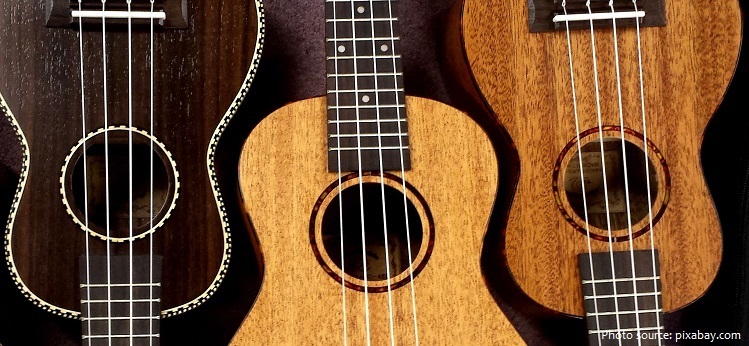
The ukulele is a musical instrument with four strings.
It is also called the uke for short.
The ukulele is a member of the lute family of instruments.
It is seldom more than 60 cm (24 inches) long and normally have nylon strings or gut strings.
The strings are usually tuned G, C, E, A’ or A, D, F#, B.
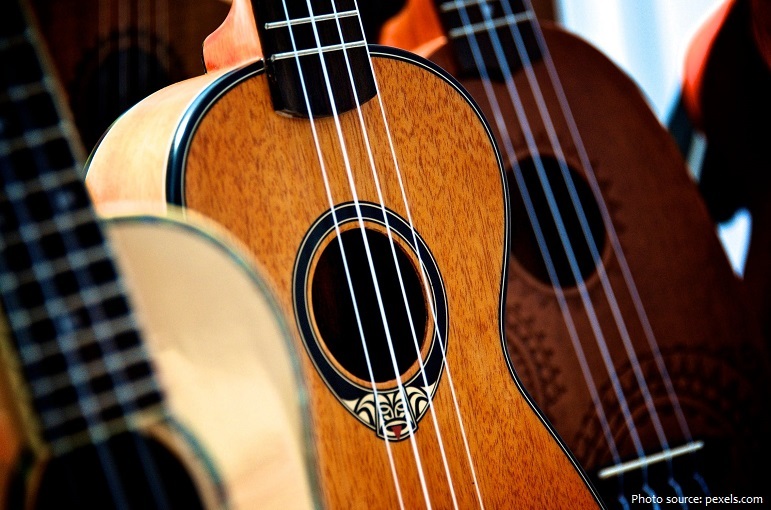
The ukulele is manufactured in a similar way as a full size guitar. It is generally made of wood. Cheaper ukuleles are generally made from plywood or laminate woods, in some cases with a soundboard of
a tonewood such as spruce. More expensive ukuleles are made of solid hardwoods such as mahogany. The traditionally preferred wood for ukuleles is a type of acacia endemic to Hawaii, called koa.
Typically, ukuleles have a figure-eight body shape similar to that of a small acoustic guitar. They are also often seen in non-standard shapes, such as cutaway shape and an oval, usually called a “pineapple” ukulele, invented by the Kamaka Ukulele company, or a boat-paddle shape, and occasionally
a square shape, often made out of an old wooden cigar box.
As of the year 2020, there are only three major ukulele manufacturers in the world. These are small companies and many of the instruments are handmade. This enables workers to inspect the instrument during every step of the manufacturing process to ensure a high quality product.
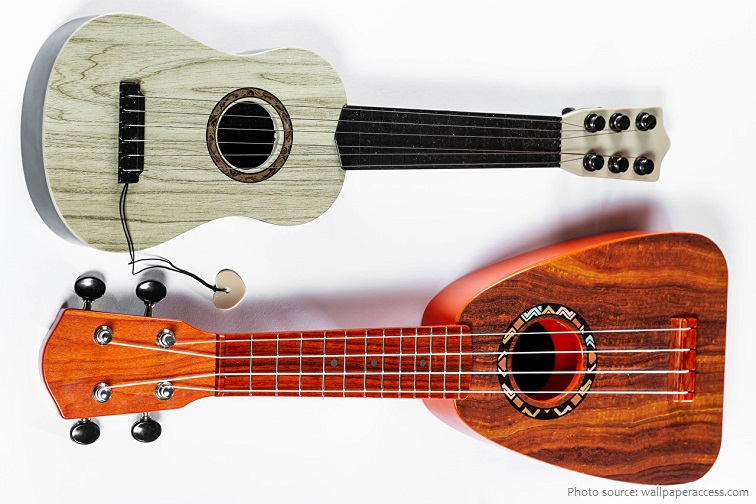
String instruments date back many centuries and have been developed independently by most ancient cultures. The earliest instruments were single strings tied to bows. Evidence of these primitive instruments has been found in Asia and Africa dating back over 3,000 years. Over time, instrument makers added more strings.
Developed in the 1880s, the ukulele is based on several small guitar-like instruments of Portuguese origin, the machete, the cavaquinho, the timple, and the rajão, introduced to the Hawaiian Islands by Portuguese immigrants from Madeira and Cape Verde. Three immigrants in particular, Madeiran cabinet makers Manuel Nunes, José do Espírito Santo, and Augusto Dias, are generally credited as the first ukulele makers.
One of the most important factors in establishing the ukulele in Hawaiian music and culture was the ardent support and promotion of the instrument by King Kalākaua. A patron of the arts, he incorporated it into performances at royal gatherings.

The ukulele was introduced to the United States mainland during the Panama-Pacific Exposition in San Francisco during 1915. Record sales of Hawaiian music grew rapidly and United States guitar manufacturers began selling their own version of the ukulele. By the 1920s and 1930s, the popularity of the ukulele spread throughout North America, and its sound became closely associated with vaudeville music shows. Since then, the ukulele has often been played as a jazz and solo instrument.
The ukulele arrived in Japan in 1929 after Hawaiian-born Yukihiko Haida returned to the country upon his father’s death and introduced the instrument. Haida and his brother Katsuhiko formed the Moana Glee Club, enjoying rapid success in an environment of growing enthusiasm for Western popular music, particularly Hawaiian and jazz.
In the 1960s, Canada was one of the first countries to initiate teaching the ukulele in schools (aside from Hawaii) and many music students learnt the ukulele under the school music program devised by John Doane. 50,000 schoolchildren and adults learned ukulele through the Doane program at its
peak.
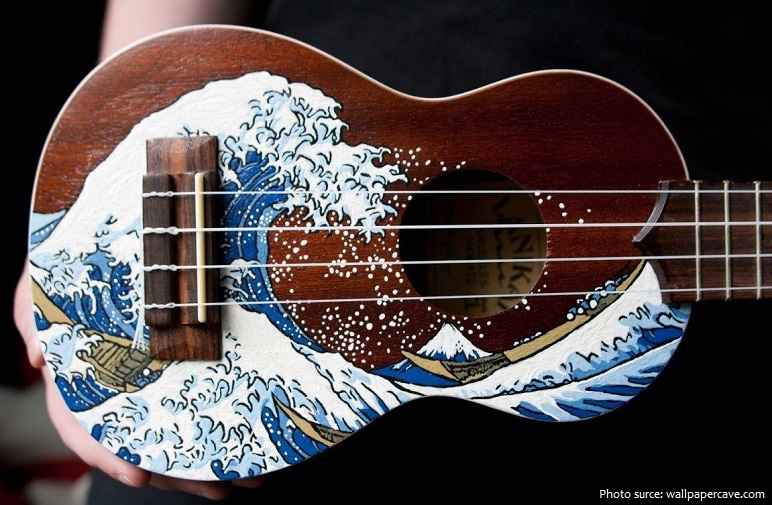
The popularity of pop-rock music caused the ukulele to fade into the background in the 1960’s, although it still existed in mainstream consciousness with the likes of The Arthur Godfrey Show and Tiny Tim’s 1968 hit Tiptoe through the Tulips. The insanely popular band ‘The Beatles’ were very fond of the ukulele, however rarely played the instrument and despite their endorsement the little ukulele lay very quietly in its case from the 1970’s until its revival in the 1990’s.
One of the earliest appearances of the word ukulele in print (in the sense of a stringed instrument) is in the Metropolitan Museum of Art’s Catalogue of the Crosby Brown Collection of Musical Instruments of All Nations published in 1907.
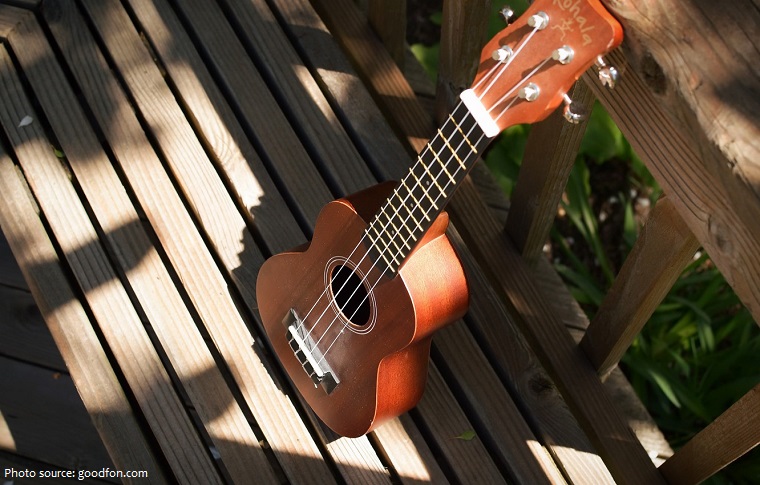
The largest ukulele is 3.99 m (13 ft 1.08 in) long and was created by Lawrence Stump (USA) and measured in Lansing, Michigan, USA, on 11 December 2015. The ukulele has the correct fret spacing required to produce notes separated by a semitone, as is the case in a normal-sized ukulele.
The “Elia” Ukulele by John D’Angelico is, by far, the most expensive ukulele ever sold with price of $26,000 . The Elia ukulele was crafted by music legend John D’Angelico sometime around 1930. John named the ukulele after Elia Pappalardi, who was the woman who commissioned the instrument.